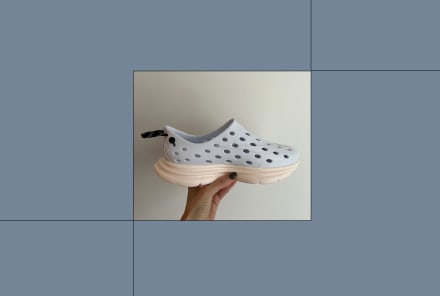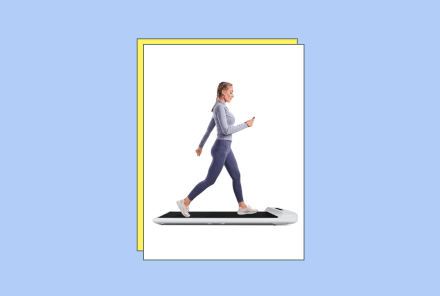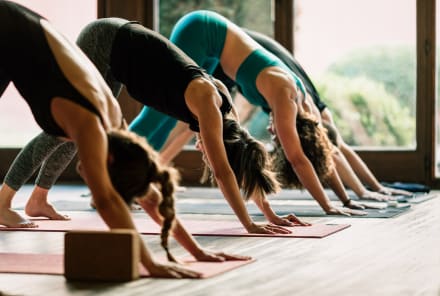Advertisement
This 15-Minute Yoga Flow Will Reduce Anxiety, Boost Energy & Improve Sleep

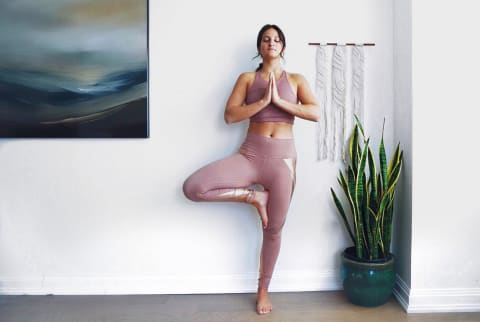
Keeping your blood sugar balanced is ridiculously important: Unbalanced blood sugar contributes to energy slumps, hanger, irritability, low libido, or fat storage. One lifestyle practice that can improve your body’s response to insulin (the hormone responsible for blood sugar management) is—you guessed it—yoga.
As a diabetic health coach and yoga instructor, I try to integrate yoga into my schedule daily. I used to be the "all-or-nothing" type: I was either dedicating 60 minutes to my practice or, if I didn’t have time, not practicing at all. In recent months though, as a midday reset from being behind the screen of the computer and my phone, I give myself the space to practice right in my apartment, even if I only have time for 15 minutes.
These yoga poses have helped balance my blood sugar by helping to reduce stress, strengthen muscles, stimulate hormonal secretion of the pancreas, build up the immune system, promote better sleep, reduce anxiety and depression, and improve energy levels.
1. Sun salutations.
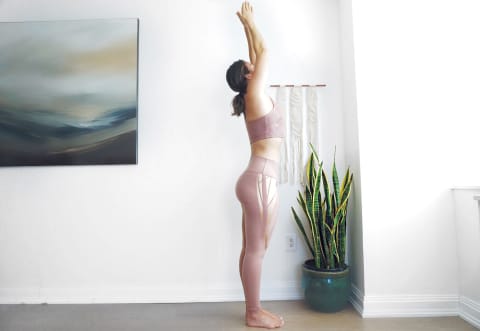
Sun salutations are a sequence of eight moves strung together. It begins with standing mountain pose at the top of your mat and moving through upward salute, forward bend, half-standing forward bend, plank pose, chaturanga, upward-facing dog, and downward-facing dog. Sun salutes involve movement of the whole body, which strengthens and lengthens the muscles, ultimately helping to increase insulin sensitivity in the body. Try going through the cycle 5 times, connecting your inhale and exhale with each movement.
2. Seated twist.
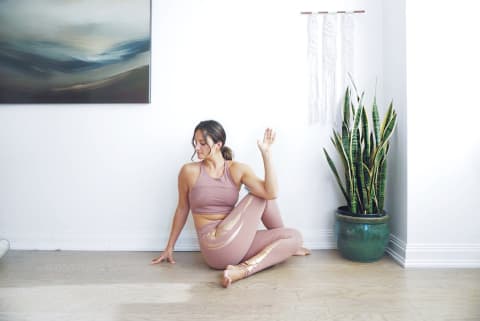
Begin in a seated posture with both legs straight out in front of you. Bend your right knee and place your foot on the outside of your left thigh. You can keep your left leg long or bend it toward your right glute. Inhale your left arm straight up as you turn your torso toward your right. Either hug the right knee into your chest as you twist or hook the back of your left triceps on the outside of your right knee. Lengthen the crown of your head toward the ceiling and gaze over your right shoulder. Make sure to do both sides.
3. Low lunge twist.
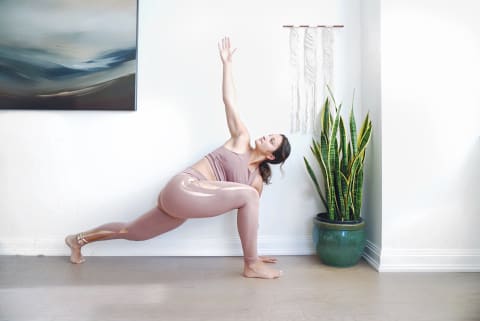
Plant your right foot at the top of the mat and step the left leg back, releasing the back knee to the ground. Plant your left palm on the ground, in line with your shoulder, and lift your right arm to the ceiling. If your body is open enough, you can go deeper into the pose by lifting the back knee and possibly hooking your left elbow on the outside of your right knee, bringing hands to prayer. Turn the top ribs up and away from the floor. Inhale to lengthen; exhale to twist deeper. Make sure to do both sides.
4. Tree pose.

Standing up tall with both feet on the ground, begin to distribute your weight to your left leg as the right leg comes off the ground. Place the bottom of your right foot on your left calf, or higher up on the inside of the thigh. Stand up tall and square your hips to the front of the room. Bring hands to heart center or expand to ceiling. Make sure to do both sides.
5. Bow pose.
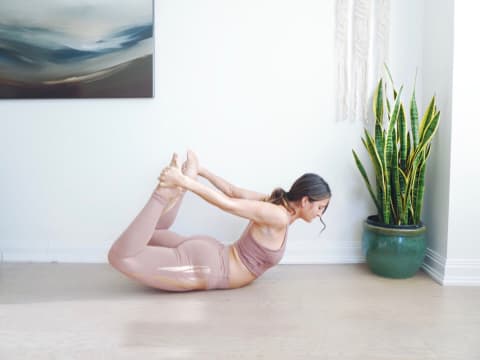
Start lying on your belly with palms facing up. Exhale and bend both knees, bringing your heels toward your glutes. Reach back with your hands and grab your ankles. Inhale and lift the chest and thighs up off the floor, pushing hands into ankles and ankles into hands to keep lifting heart center up. Draw shoulders away from ears and gaze a few inches beyond the tip of your nose.
6. Plow pose.
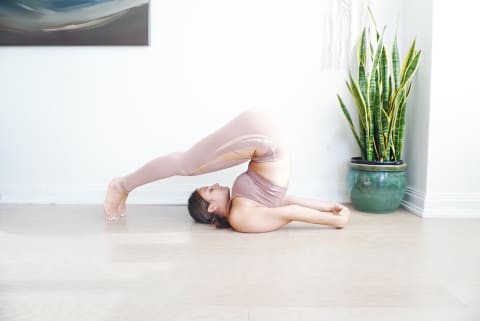
Begin lying flat on your back. On the inhale, use your core to lift your legs and send them over your head, keeping both palms on your lower back for support. If your toes touch the floor, you can release the palms from your back and clasp them underneath you. Align your hips over your shoulders and keep a space between your chin and chest. To release, support your back with your hands and slowly roll legs down one vertebrae at a time.
7. Seated meditation.
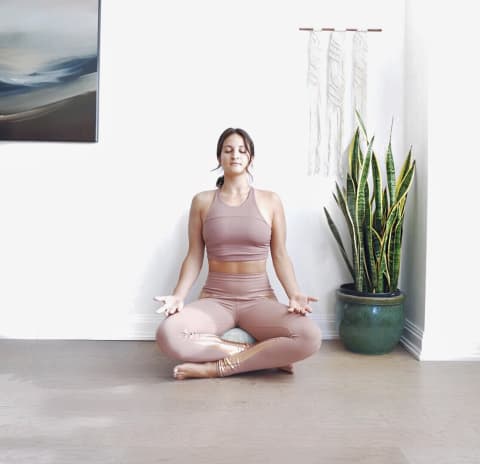
Find a comfortable position, either seated with or without wall support or lying on the ground, and close your eyes. You can set a timer or try the Calm app to guide you. Feel the sensation of the breath on the inhale and exhale. Option to focus on a mantra such as, "I am at ease."
Want more ideas for balancing blood sugar? Here are five foods to make it happen.
Watch Next
Enjoy some of our favorite clips from classes
Enjoy some of our favorite clips from classes
What Is Meditation?
Mindfulness/Spirituality | Light Watkins
Box Breathing
Mindfulness/Spirituality | Gwen Dittmar
What Breathwork Can Address
Mindfulness/Spirituality | Gwen Dittmar
The 8 Limbs of Yoga - What is Asana?
Yoga | Caley Alyssa
Two Standing Postures to Open Up Tight Hips
Yoga | Caley Alyssa
How Plants Can Optimize Athletic Performance
Nutrition | Rich Roll
What to Eat Before a Workout
Nutrition | Rich Roll
How Ayurveda Helps Us Navigate Modern Life
Nutrition | Sahara Rose
Messages About Love & Relationships
Love & Relationships | Esther Perel
Love Languages
Love & Relationships | Esther Perel



